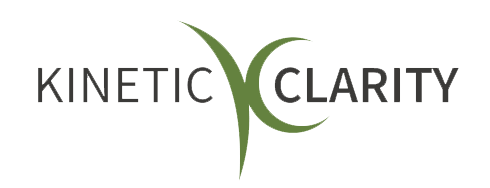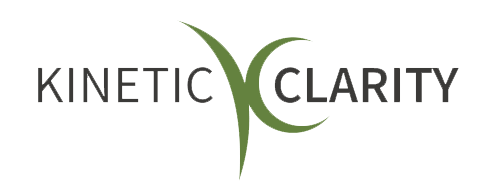How to De-toxify Your Workplace for a More Positive, Productive Workforce
Find and beat workplace toxicity

In this blog post, we’ll share valuable insights about and practical tips on how de-toxify your workplace and create a more positive and productive workforce. By following these strategies, you can transform your work environment into a place where employees thrive, feel motivated, and produce exceptional results.
Employee wellbeing and workplace health affects your company's productivity. Stressful work settings compound employee stress, which can cause health issues and drive higher levels of regrettable turnover. So what can you do to mitigate these issues in your organization, increase productivity and reduce health cost payouts?
Read on to learn 5 areas toxicity affects your workplace, and 5 ways to clear the air.
What is a Toxic Office?
A toxic workplace is one where negativity prevails. However, it isn’t always about outward behavior; toxicity can manifest itself in several ways. You can't always rely on employees staring blankly like zombies to know that something is off.
Sometimes, negativity is brewing beneath the surface, making it hard to identify a toxic workplace. Some examples include a lack of upward mobility, co-workers who can’t get along with each other, unrealistic expectations set by management, and an overall lack of support.
Toxic workplaces aren’t out of the ordinary, however. MIT Sloan School of Management found that approximately one in nine employees feel that their workplaces are toxic. Aside from feelings of dread about going to work each day, a toxic work environment can have impactful and long-lasting effects. Consistent exposure to toxic environments can lead to stress for a person, and sustained stress has physical ramifications.
Illness and indisposition stemming from stress affect more than just your employees. When they’re not feeling well, your revenue and reputation can suffer.
5 Ways Toxicity Affects Company Culture...
Keeping your office running smoothly and friction-free can sometimes feel like a full-time job. And indeed, it does require consistent monitoring. Each employee brings along their own unique personality, and not all personalities mix well. Add the stress of meeting deadlines and company goals and expectations, it’s easy to see how bad feelings may sometimes begin to settle in.
Reducing or eliminating employee stress is in the company's best interest since it can impact nearly every pocket of your company. How does toxicity affect your company, and what can you do to mitigate it? Whether you’re deep in it or you’re looking to stop the descent into a bad situation, let’s look at five places toxicity can set it, and what you can do about it.
Productivity
Stress related to a toxic setting impacts employees’ mental health. They can become disengaged from their work or have difficulty focusing. Both of these are linked to productivity levels.
Why does it matter?
Decreased productivity in one employee can be a challenge; if many employees are suffering the effects of a toxic workplace, that’s a loss of productivity on a mass scale.
Employee Churn
Ultimately, disaffected employees may seek employment in a less stressful environment, causing high employee churn. For example, US workers cite toxic work culture as a reason for leaving 10.4 times more than low wages.
Why does it matter?
It isn’t beneficial for a company to lose their employees in high percentages; hiring new employees is costly. It also causes further loss of productivity for a company because these new employees need to be trained, and it can take a while to get fully up to speed.
Customer Satisfaction
Customers may wind up feeling the sting, too. Employees may inadvertently take it out on the customer, providing poor service if they feel stressed.
Why does it matter?
Decreased customer satisfaction ends with fewer repeat customers.
Brand Integrity
Ultimately, when a company loses customers, its brand will take a hit. The dissatisfied customers may tell their friends and family about their poor experience with your company.
Why does it matter?
Social media can help them amplify their negative review. The more unhappy customers your business creates, the more your brand integrity diminishes.
Healthcare Costs
When stress begins to take its toll on your employees, their health bills start to add up. High blood pressure, digestive problems, headaches, and fatigue means more visits to their doctor.
Why does it matter?
This means increased healthcare costs not only for them but for your company, too. Roughly 5-8% of annual healthcare costs stem directly from how businesses manage their employees and workspaces.
...(and what you can do about it)
Leadership Development
One significant aspect of detoxifying your office is giving your workforce more professional growth opportunities. You have a unique chance to support your employees by helping them reach their full potential. Providing training and leadership development opportunities allows your employees to feel as if they are taking ownership of their careers.
When you give them the tools they need to succeed and create a culture of personal development, they’ll feel more fulfilled and motivated. In addition, employees who feel supported by their organization appreciate the investment in them and are more likely to feel more invested in the company, in turn.
Team Development
Another vital aspect of detoxifying your workplace is supporting team coaching and cohesion. A solid and united team can enhance productivity, creativity, and job satisfaction.
Encourage open communication, recognize team successes, and create opportunities for team-building activities. These are all powerful elements that can contribute to a positive team dynamic. It’s also vital to address conflicts and provide resources for conflict resolution; this helps maintain a harmonious workplace.
By prioritizing team cohesion, you can create a supportive and collaborative work environment where employees feel valued and can work together towards common goals. This not only benefits the team but also positively impacts the overall success of your organization.
Help the Workforce Navigate Change
Change is inevitable in life, even in the workplace. This can often be a source of stress for employees, so it's important to support your workforce in navigating these changes. You can manage this through effective communication, providing personal and professional development resources, and involving employees in decision-making processes.
Creating a culture that embraces change and encourages adaptability can reduce resistance to change and foster a positive and productive workplace. Regularly soliciting feedback from your workforce and making changes based on their input can create a sense of empowerment and ownership, further fostering a positive work environment.
Build Strong Connections and Relationships
Creating positive relationships in the workplace is essential to advancing a safe and peaceful work environment. This includes fostering strong relationships between coworkers, as well as between employees and their supervisors.
Encouraging open communication and creating opportunities for team building can help to build trust and foster a sense of community. It's also important to recognize and appreciate each individual's unique strengths and contributions; this helps to promote a positive and inclusive workplace culture. By prioritizing positive relationships, you can create a workplace where employees feel supported, valued, and motivated to succeed.
Encourage Important Conversations
Work-life balance is a critical issue for many employees and can significantly impact their overall well-being and job satisfaction. Therefore, creating a workplace culture that values and supports employees’ personal lives is essential.
This can include having open and honest conversations about work-life balance and providing resources and support for employees to achieve a healthy balance. Encouraging flexibility in work arrangements, such as remote work options, and offering paid time off for rest and rejuvenation can also support work-life balance.
Promoting work-life balance can create a more relaxed workplace where employees feel supported in all aspects of their lives.
Wrapping it Up
If your workplace is starting to feel as if it’s headed in the wrong direction, don’t panic. It isn’t a reflection of a bad organization, but it does need to be addressed quickly. The longer your HR team waits to address issues of stress, the worse your company will perform. Thankfully, there are numerous ways you can resolve the stagnant air in your workplace and help your employees thrive, resulting in a positive and fruitful office.












